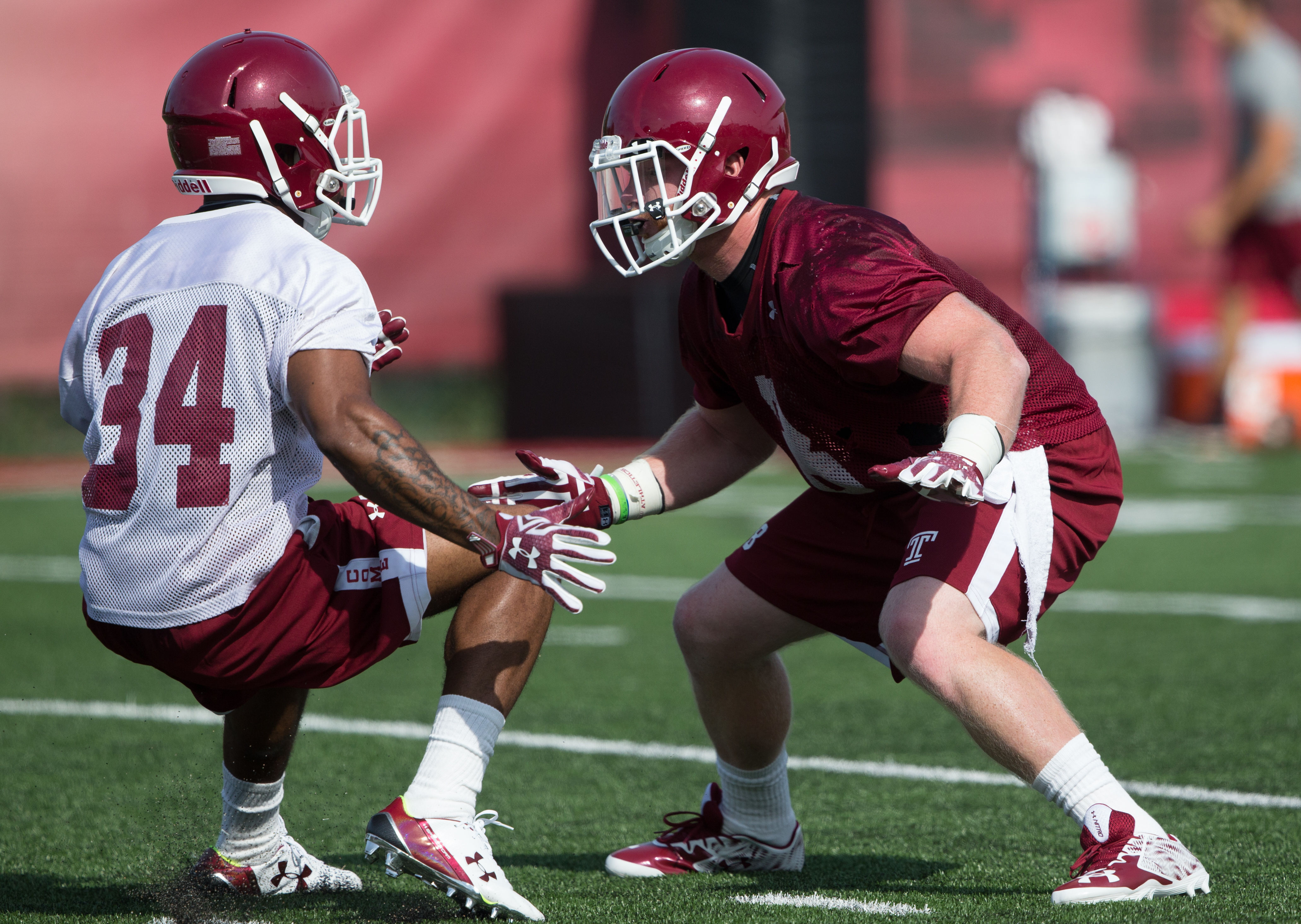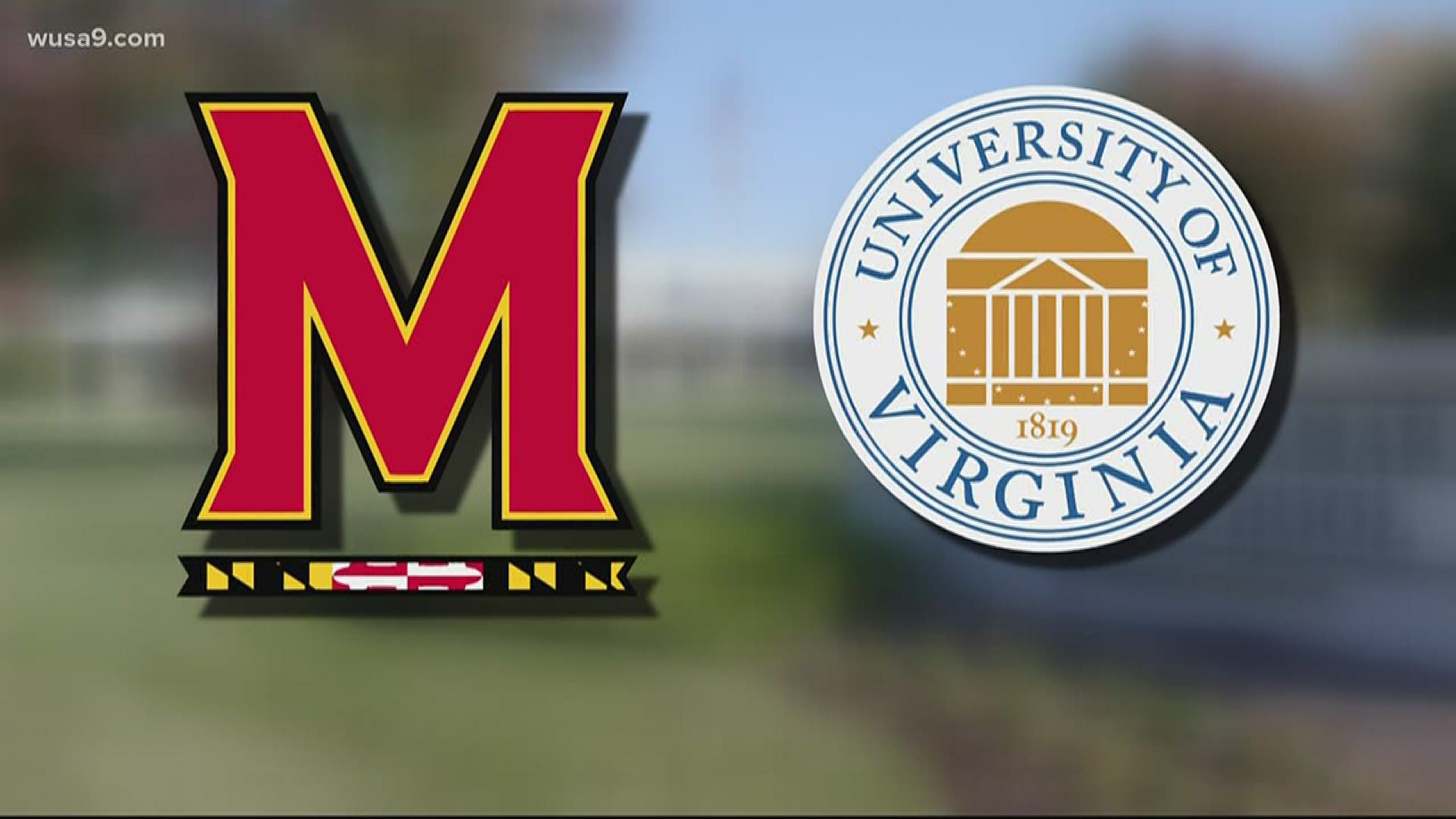Stanford’s virtual-reality technology, obtained via the football program’s partnership with STRIVR Labs in Palo Alto, Calif., allows its quarterbacks to prepare for any defensive alignment without stepping foot on the field, essentially substituting crucial mental repetitions for the wear and tear of practice.
Every little advantage helps, even if most of the Cardinal’s practices this spring involved far less hitting than one might expect — minus a single daily session in particular: a set time devoted to full-contact drills, with tackling and blocking occurring at full speed.
Stanford coach David Shaw will preface these sessions with a message. Block high and tackle high, he’ll tell his team, and stay face to face and chest to chest.
“The game is still blocking and tackling, and avoiding blocks and avoiding being tackled,” Shaw said. “And the only way to get good at that is by doing it.”
![The philosophy that transformed Washington's defense [oembed : 83271194] [oembed : 83271194] [oembed : 83271194] [oembed : 83271194] [oembed : 83271194] [oembed : 83271194]](/Portals/_default/Skins/PrestoLegacy/CommonCss/images/smartembed.png)
When it comes to practice, many programs, such as Stanford, Temple and several others, have clung to more time-honored habits to help mirror a game-day atmosphere. For Stanford, there’s a simple reason for sticking with tradition: Long viewed as one of the more imposing teams in the Football Bowl Subdivision, the Cardinal find it impossible to otherwise replicate the speed and physicality found on an individual Saturday.
“For me, to go the entire practice without practicing ‘real football’ is hard,” said Shaw. “I don’t know how you can ask 19-year-old kids to flip the switch and all of a sudden do something on game day — with all the pressure and all the emotion — that he hasn’t done in a week. That to me is difficult.”
Added Temple coach Matt Rhule, “Our thing is, when you go, you go. You have to. It’s unsafe to put kids out there in the game to play at a speed that they haven’t practiced, and practiced for a long time.”
Yet the national rise in awareness of the dangers of head trauma — for example, a top NFL official recently acknowledged a tie between repetitive concussions and chronic traumatic encephalopathy, or CTE — has led other college programs to address their level of contact during practice, and not just how much they hit or how often they hit, but how they hit, if they hit at all.
“I know discussions are much more likely to take place in locker rooms,” said Oregon State coach Gary Andersen, “and it’s happening in ours, too.”
The growing concern among college coaches, athletics directors and university administrators over the immediate and long-term impact of recurring contact has led the head coaches in one conference, the Ivy League, to unanimously suggest eliminating tackling during practice altogether.
![Quarterback talk: spring games version by Football Four [oembed : 83335270] [oembed : 83335270] [oembed : 83335270] [oembed : 83335270]](/Portals/_default/Skins/PrestoLegacy/CommonCss/images/smartembed.png)
“We’ll have a pretty in-depth discussion about what the Ivy League is talking about doing,” said Dr. Jon Steinbrecher, the commissioner of the Mid-American Conference. “It’s not just a regular-season issue. What are you doing in the preseason? What are you doing in spring ball?”
One major conference, the Pac-12, has addressed in-season contact by limiting its members to just two full-contact practices per week. The NCAA has passed legislation setting a standard for spring drills — full-contact drills are permissible in no more than 12 of the 15 practices. In terms of preseason camp, the regular season and postseason, the NCAA has put forth only guidelines, suggesting during the regular season, for example, that teams hold no more than two full-contact practices during a given week.
Even without any concrete legislation, many FBS programs are adopting a variety of new styles, leg by rugby-style tackling, designed to retain effective technique while minimizing the potential for injury.
![Grains of salt or growing stars? Players who broke out in spring games [oembed : 83268988] [oembed : 83268988] [oembed : 83268988] [oembed : 83268988] [oembed : 83268988] [oembed : 83268988] [oembed : 83268988] [oembed : 83268988] [oembed : 83268988] [oembed : 83268988]](/Portals/_default/Skins/PrestoLegacy/CommonCss/images/smartembed.png)
Dozens of teams, both on the Power Five and Group of Five levels, now utilize the rugby style during practice, drawn to a change in approach after watching a video from Seattle Seahawks coach Pete Carroll detailing the method. Boiled down, Carroll’s system — one he calls “Hawk Tackling” — offers a drastic change from tradition: rather than tackling with the head, defenders are taught to lead with their shoulders.
“It’s definitely a safer way to tackle,” said Rutgers defensive lineman Darius Hamilton. “With the rugby-style tackle, you want to kill the engine, which is basically wrapping the thighs, stopping the legs. So I definitely think this tackling system is more efficient, and it’s just going to take the matter of the more reps you can get of it because you can’t do something like that enough.”
In terms of technique, the biggest change comes in head placement, said Kentucky coach Mark Stoops, who spoke with several college and NFL coaches before implementing rugby-style tackling during the Wildcats’ practices prior to last season.
“You just try to keep your head out of it,” Clemson coach Dabo Swinney said. “It’s really about the fundamentals and the technique. We try to teach everybody the proper way to tackle. Really, everybody should know, whether you’re the left guard or the kicker. You have to be able to tackle in this game.”
One newcomer to the system is Nebraska, which first considered installing the approach last offseason before tabling the idea until the spring; the coaching staff, led by Mike Riley, felt uncomfortable relying solely on Carroll’s how-to video.
Still interested in the system, Riley and his support staff began a collaboration with ATAVUS, a Seattle-based company built around the mission statement of “integrating rugby-inspired tackling that satisfies growing player-welfare concerns.” After meeting with ATAVUS shortly after national signing day, Riley opted to install the rugby-style method during the Cornhuskers’ spring drills.
“I really feel good about the fact that we can look into something that’s just better for the kids,” Riley said. “Our goal here is better tackling, better emphasis on tackling and safer tackling. When you throw in the fact that, ‘Hey, we can help this game in general, in a safer manner,’ I think that’s all very positive for me.”
At Nebraska and elsewhere, the move toward new techniques and methodology is indicative of what may be viewed as part of a broader shift in mentality — even as the change in style comes with a slight sense of trepidation.
![In the backyard of Bieber and Kardashian, football stars abound [oembed : 83268996] [oembed : 83268996] [oembed : 83268996] [oembed : 83268996] [oembed : 83268996] [oembed : 83268996] [oembed : 83268996] [oembed : 83268996] [oembed : 83268996] [oembed : 83268996]](/Portals/_default/Skins/PrestoLegacy/CommonCss/images/smartembed.png)
For coaches, the approach runs contrary not only to tradition — that of using weekday practices, contact and all, to fully replicate the upcoming Saturday — but also to the basic principles of tackling the vast majority have utilized throughout their careers.
“It’s a little bit scary,” Riley said. “There are some things that as you look at this are different than the fundamentals that you’ve taught for years. It’s like, ‘Whoa.’ That’s fundamentally different than what I’ve ever taught before. But I think I get it.”
Yet even as tackling and repetitive contact remain part of the game — an unavoidable aspect of football itself, regardless of the level of competition — many coaches and programs recognize one avenue for change: New tactics in tackling can make football safer, if only in relative terms.
“At the end of the day, it’s a violent, collision sport,” Swinney said. “That’s never going to change. But certainly the techniques can improve.”
SCENES FROM SPRING FOOTBALL
![Highlights from spring football [gallery : 82863910]](http://www.gannett-cdn.com/-mm-/e6ed2a774325dc7d17b31a11ad9da34e6b34fea8/c=208-0-1981-1515/local/-/media/2016/04/16/USATODAY/USATODAY/635964165883333887-USATSI-9253747.jpg)


![USP NCAA FOOTBALL: NOTRE DAME AT STANFORD S FBC USA CA [image : 83269034]](http://www.gannett-cdn.com/media/2016/04/20/USATODAY/USATODAY/635967183036072844-DAVID-SHAW-77916254.JPG)
![XXX _TEMPLE OWLS_5929.JPG S FBC USA PA [image : 83269038]](http://www.gannett-cdn.com/media/2016/04/20/USATODAY/USATODAY/635967184083775560-XXX-TEMPLE-OWLS-5929-74994784.JPG)
![USP NCAA FOOTBALL: MICHIGAN AT RUTGERS S FBC USA NJ [image : 83269050]](http://www.gannett-cdn.com/media/2016/04/20/USATODAY/USATODAY/635967187434521039-USP-NCAA-FOOTBALL-MICHIGAN-AT-RUTGERS-67785044.JPG)
![USP NCAA FOOTBALL: CLEMSON SPRING GAME S FBC USA SC [image : 83269056]](http://www.gannett-cdn.com/media/2016/04/20/USATODAY/USATODAY/635967188754445500-USP-NCAA-FOOTBALL-CLEMSON-SPRING-GAME-81100738.JPG)
